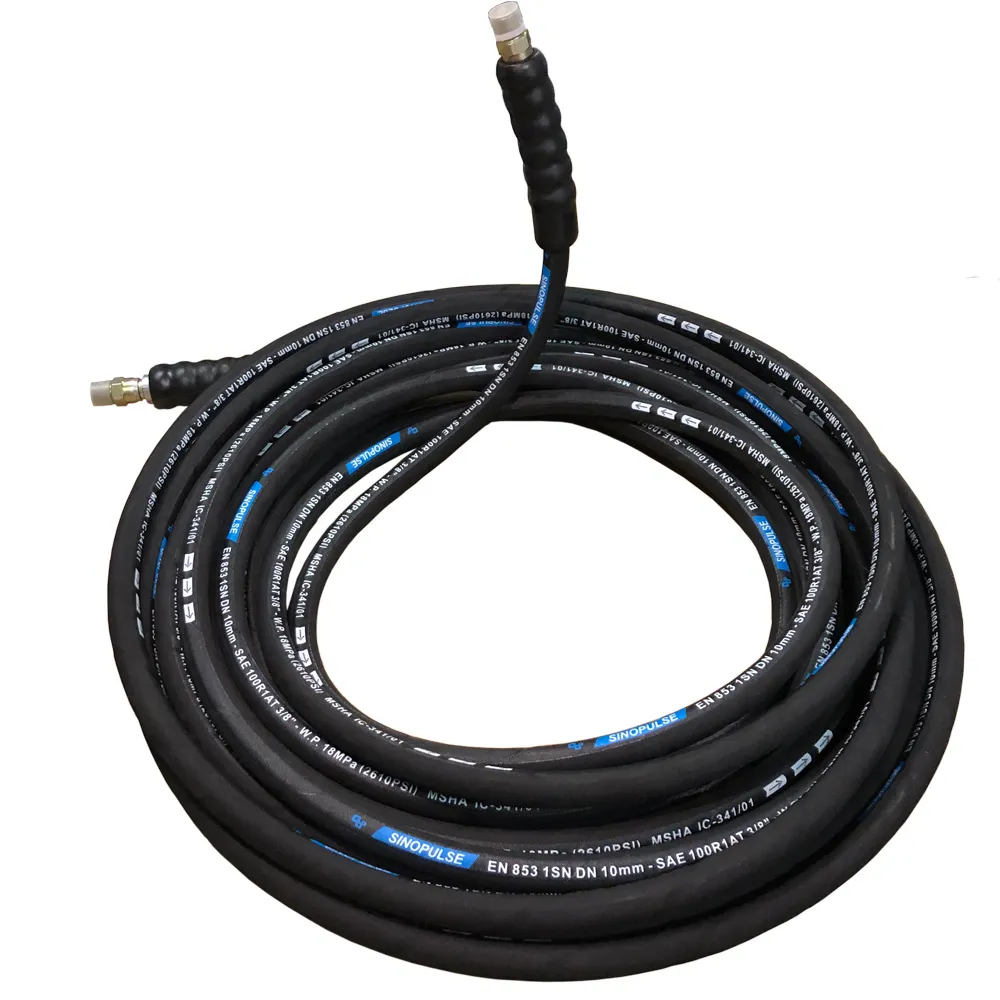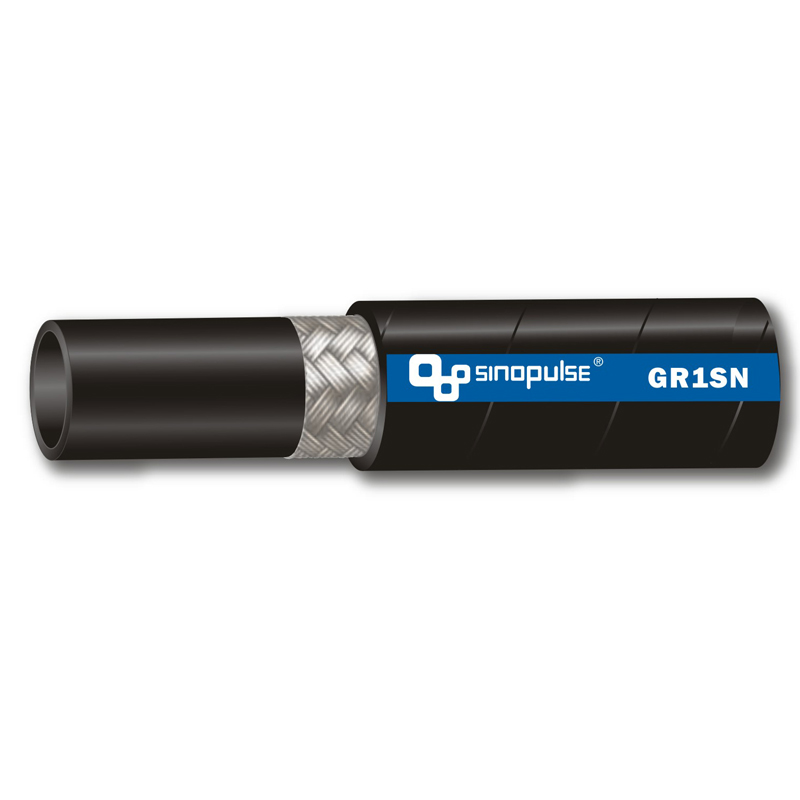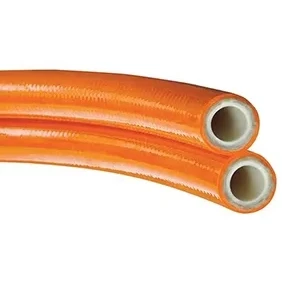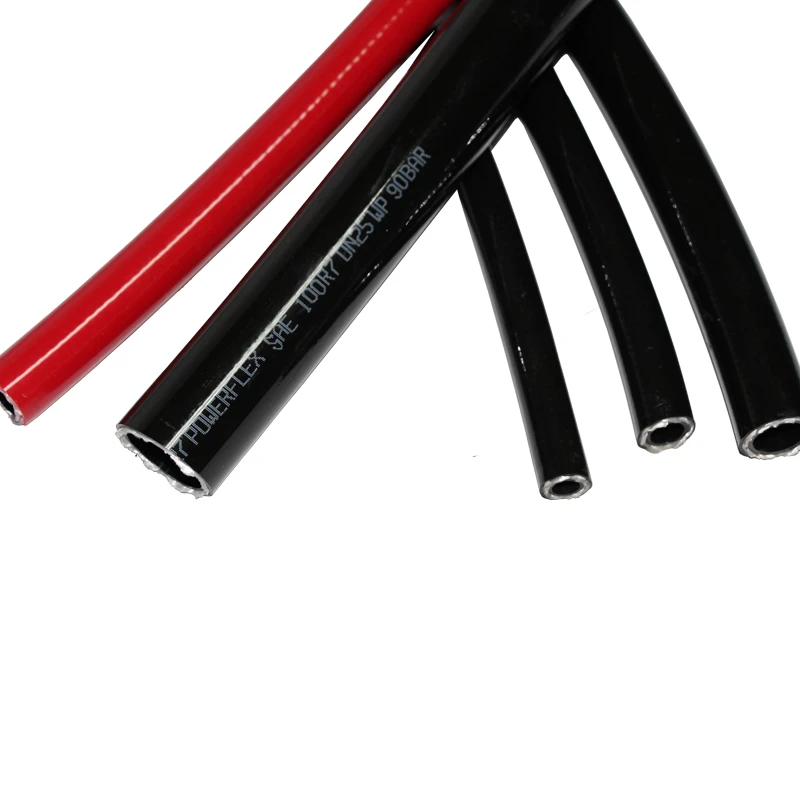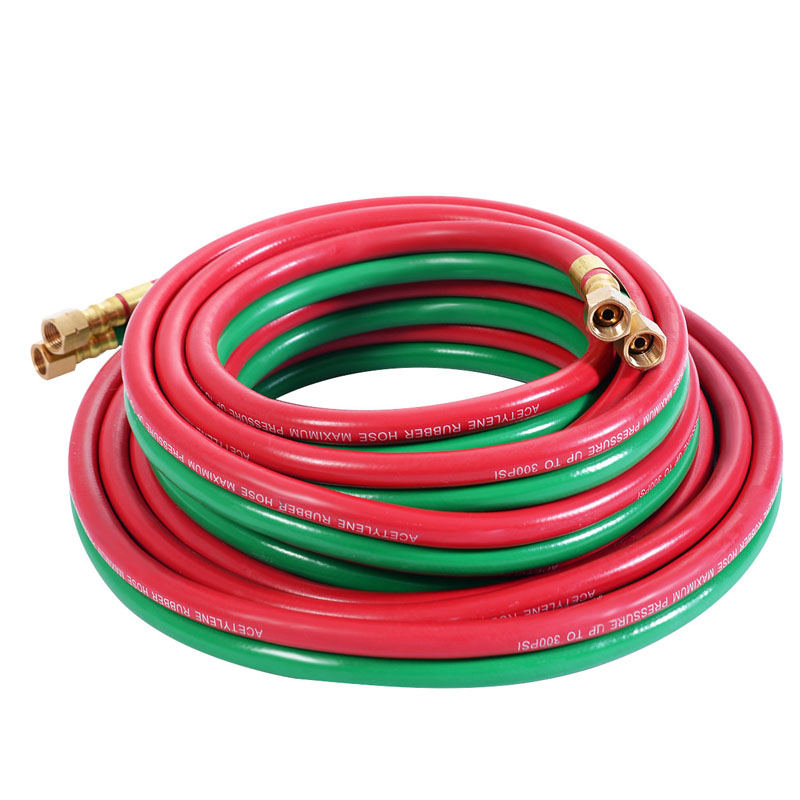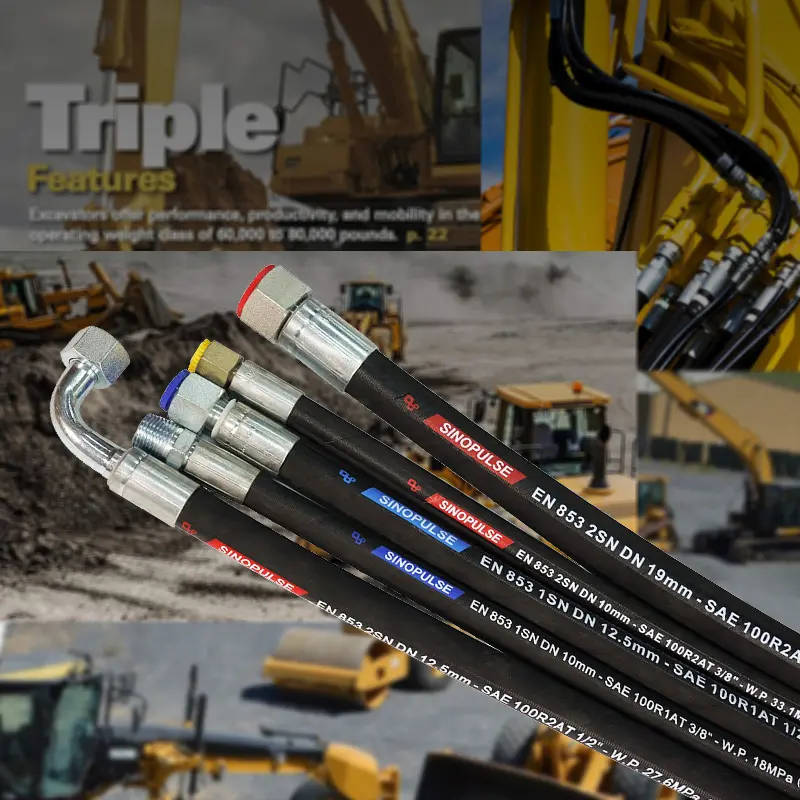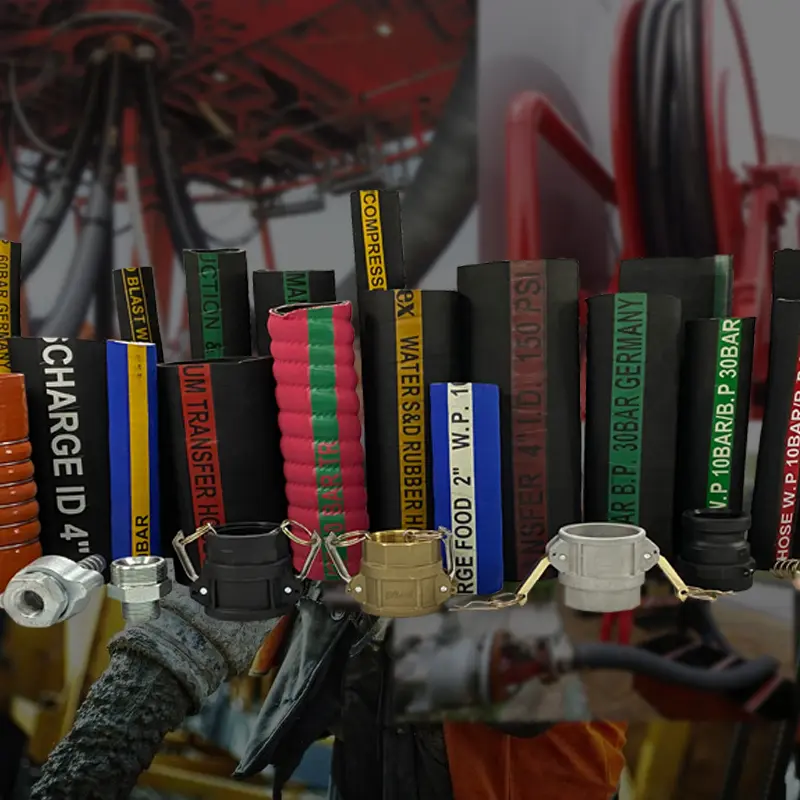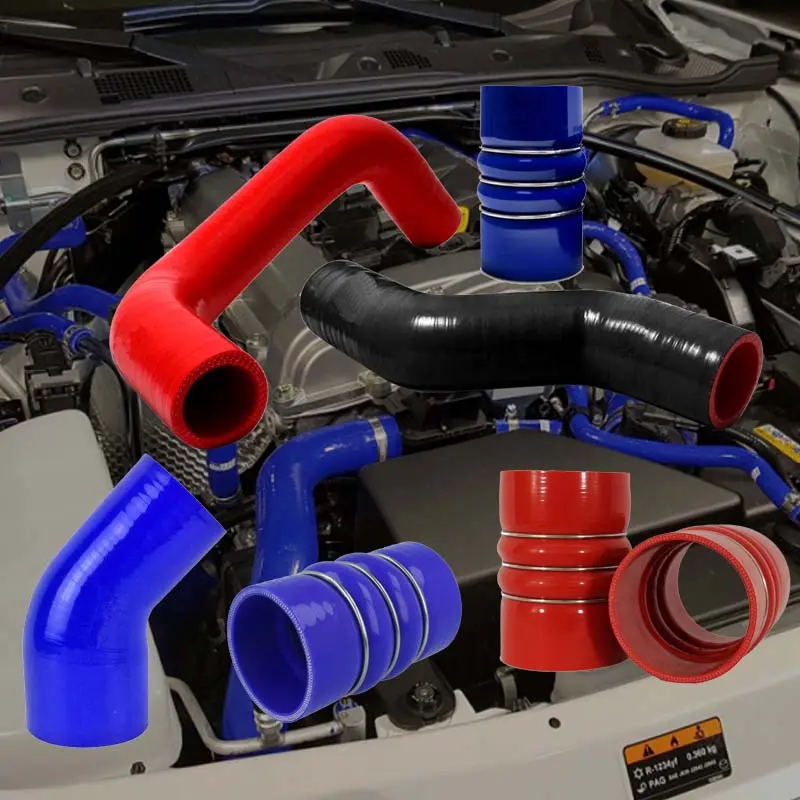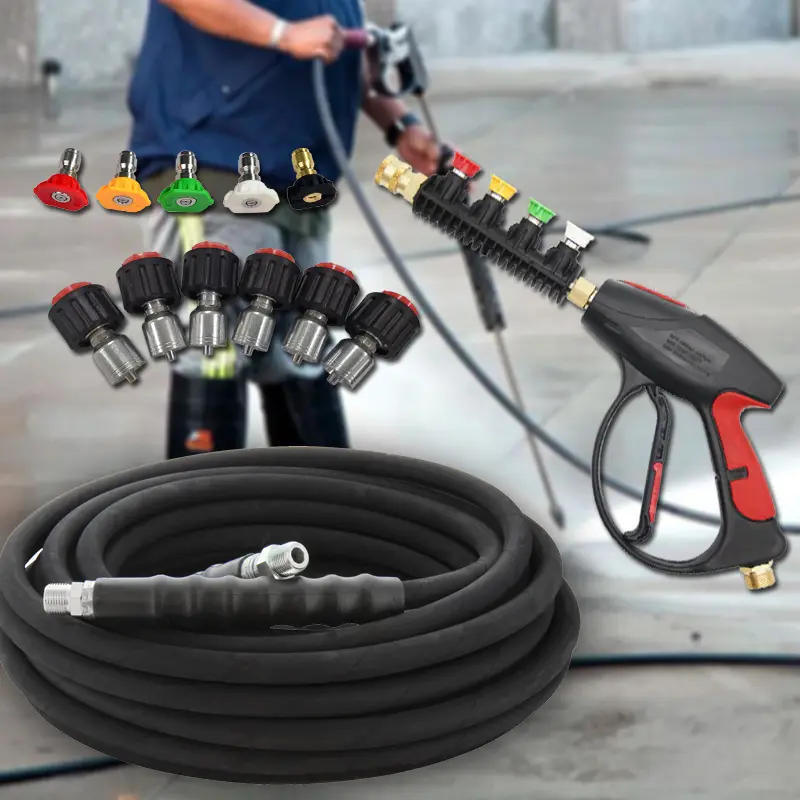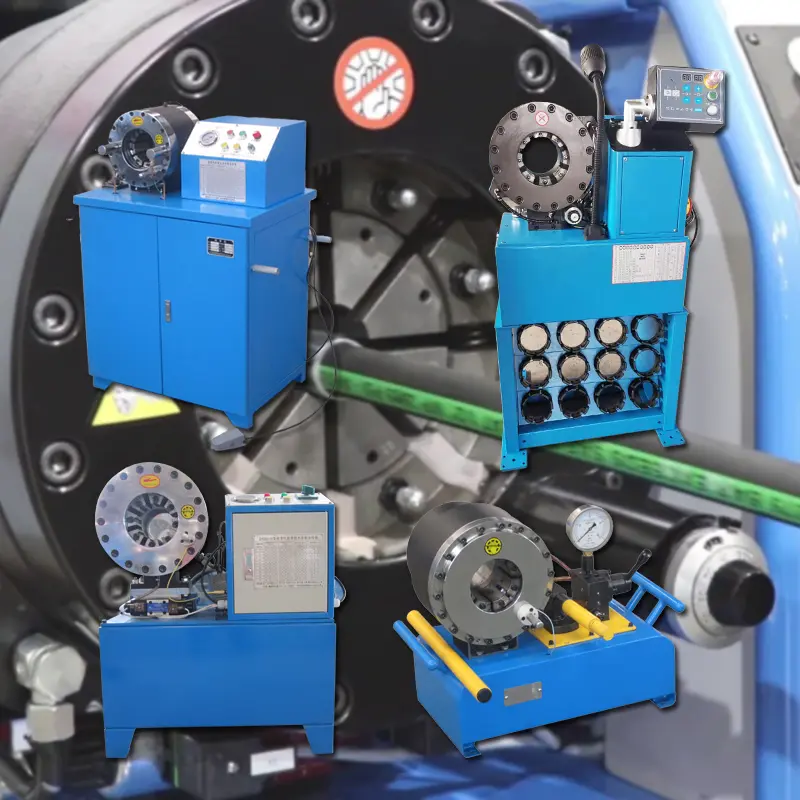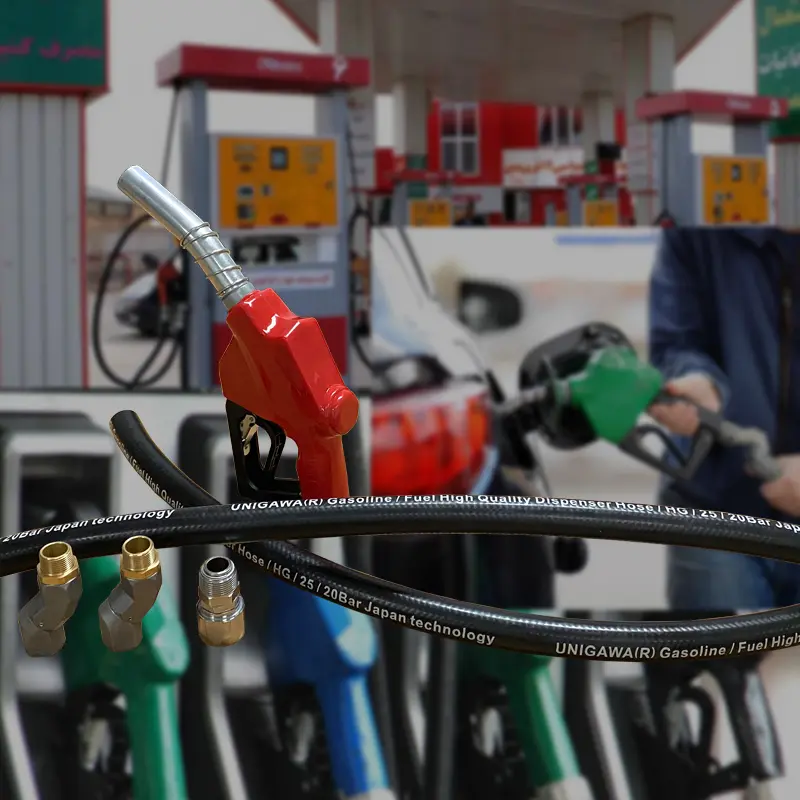The Indispensable Role of SAE100 R13 Hydraulic Hoses in Modern Industry
In the demanding landscape of modern industrial operations, the integrity and performance of hydraulic systems are paramount, directly influencing productivity, safety, and operational costs. At the heart of these critical systems lies the hydraulic hose, a component often underestimated yet vital for transmitting power in fluid applications. Among the various types, the r13 hose stands out as a pinnacle of engineering excellence, specifically designed for exceptionally high-pressure and high-impulse environments. This multi-spiral wire reinforced hose adheres to stringent international standards, including SAE J517 100R13 and ISO 3862-1 R13, ensuring unparalleled reliability and longevity in the most arduous conditions. The increasing complexity of heavy machinery in sectors such as construction, mining, and oil & gas necessitates hydraulic components that can withstand extreme pressures, wide temperature fluctuations, and continuous dynamic stress without compromise. Understanding the technical intricacies, manufacturing precision, and application specific advantages of these advanced hydraulic solutions is crucial for procurement managers, engineers, and technical specifiers seeking to optimize their operational efficiency and minimize downtime.
Industry trends indicate a continuous drive towards more robust, higher-performing, and longer-lasting hydraulic components. The evolution of heavy-duty machinery, characterized by increased power output and more compact designs, places unprecedented demands on fluid conveyance systems. Consequently, the adoption of specialized hoses like the r13 hose has become a standard requirement rather than a mere option. This shift is driven by the need to reduce maintenance cycles, enhance safety protocols, and improve overall equipment effectiveness (OEE). The unique construction of the SAE100 R13 series, featuring multiple layers of high-tensile steel wire spirals, provides superior resistance to pressure surges and fatigue, making it an ideal choice for machinery operating under relentless stress. Furthermore, advancements in synthetic rubber compounds for both the inner tube and outer cover have significantly improved their resistance to abrasion, ozone, and a wide array of hydraulic fluids, extending their service life even in chemically aggressive environments. This comprehensive approach to design and material selection ensures that the hydraulic hose r13 not only meets but often exceeds the demanding performance expectations of critical industrial applications worldwide.
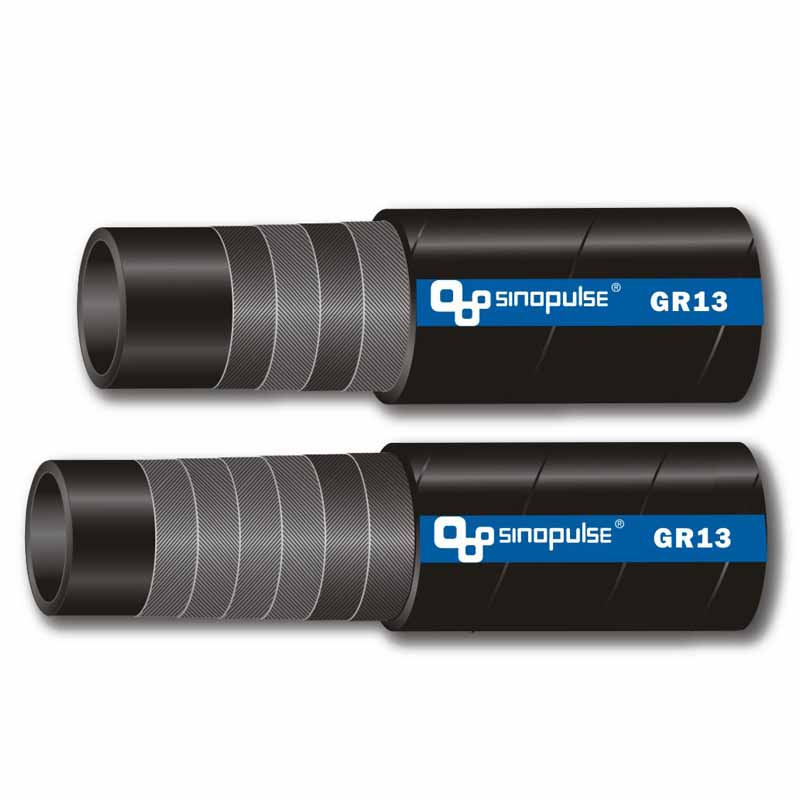
Unveiling the Manufacturing Prowess of SAE100 R13 Hoses
Core Manufacturing Process and Material Science
The production of a high-performance hydraulic hose r13 is a sophisticated multi-stage process that combines advanced material science with precision engineering. It typically begins with the extrusion of the inner tube, which is formulated from a specialized synthetic rubber compound, often NBR (Nitrile Butadiene Rubber) or similar, chosen for its excellent oil resistance, heat resistance, and flexibility. This tube is critical as it directly contacts the hydraulic fluid, preventing chemical degradation and ensuring smooth fluid flow. Following the inner tube extrusion, the reinforcement layers are meticulously applied. For an r13 hose, this involves multiple layers – typically four or six – of high-tensile steel wire wound in opposing spirals. This spiral winding process is critical for achieving the hose's exceptional pressure rating and resistance to fatigue. Each layer is applied with precise tension and angle to distribute stress evenly across the hose wall, preventing elongation under pressure and ensuring structural integrity during high-impulse cycles.
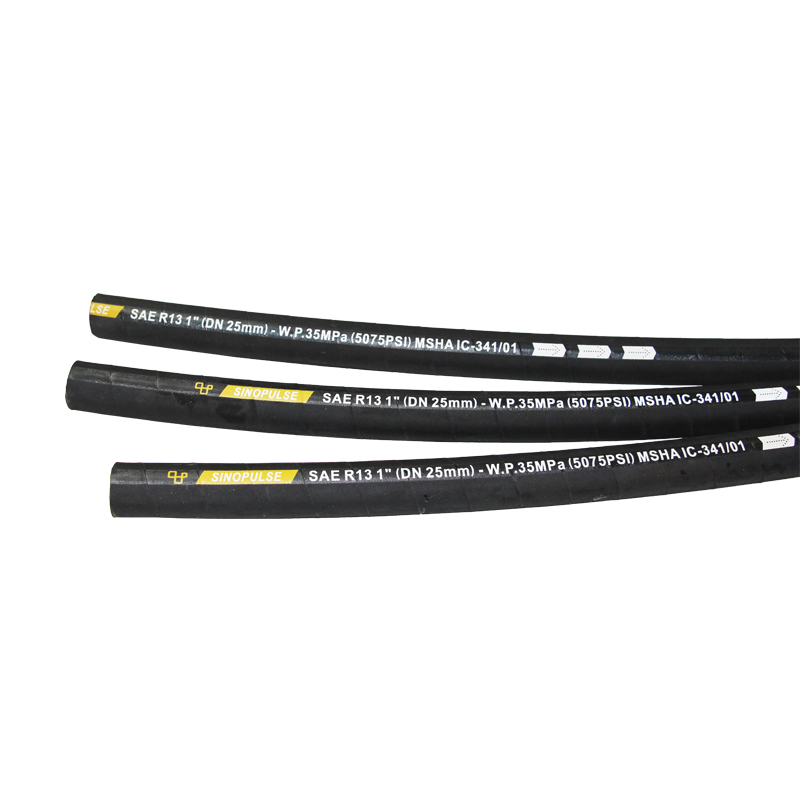
After the reinforcement layers are in place, an adhesion layer or separation layer, often a thin rubber compound, is applied to ensure proper bonding between the wire and the outer cover. The final stage involves the extrusion of the outer cover, which is typically made from an abrasion-resistant synthetic rubber, such as Neoprene (CR) or a blend designed for superior weather, oil, and ozone resistance. This outer layer protects the delicate wire reinforcement from environmental damage, physical abrasion, and chemical exposure, significantly contributing to the hose's overall service life. The entire assembly then undergoes a vulcanization process, where it is heated under pressure, chemically transforming the rubber compounds into a highly durable and elastic material. This curing process locks the layers together, ensuring dimensional stability and optimal performance under various operational conditions. Rigorous inspection standards, including ISO and ANSI protocols, are applied throughout the manufacturing process, from raw material inspection to final product testing, guaranteeing that each hydraulic hose r13 meets its specified performance parameters, including burst pressure, impulse cycles, and flexibility. This meticulous manufacturing flow ensures that the final product offers superior resistance to pressure, extended service life, and reliable performance in demanding environments like petrochemical, metallurgy, and heavy construction industries, demonstrating advantages in energy efficiency by minimizing leakage and providing exceptional anti-corrosion properties due to robust outer covers.
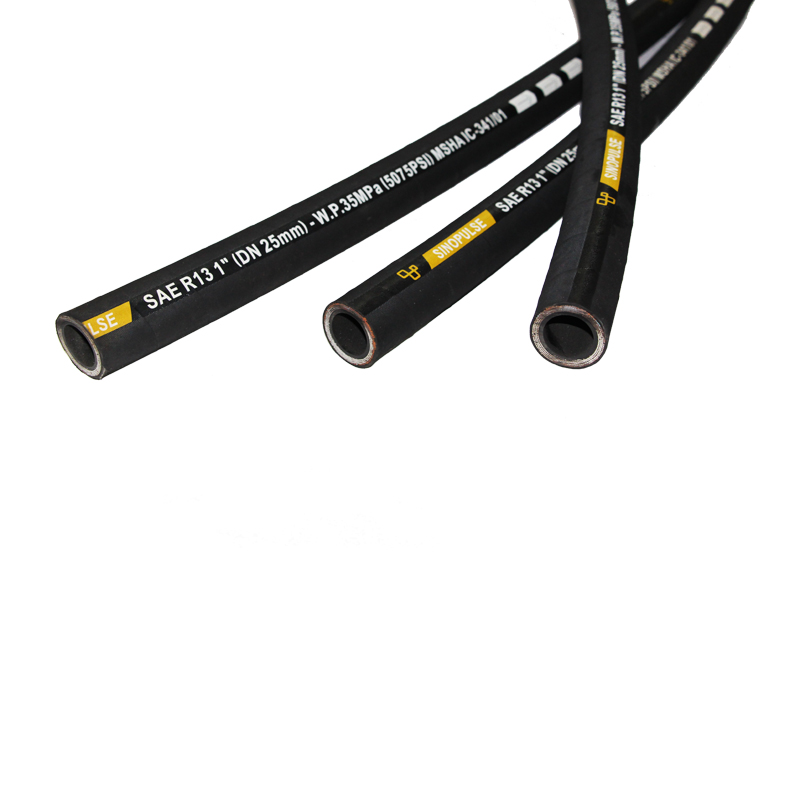
Technical Parameters and Performance Benchmarks for SAE100 R13
The performance of a hydraulic hose r13 is meticulously defined by a range of technical parameters, which are critical for engineers and designers to ensure compatibility and reliability within their hydraulic systems. These parameters, strictly governed by SAE J517 100R13 and ISO 3862-1 R13 standards, encompass everything from nominal bore size to burst pressure ratings and operating temperature ranges. Understanding these specifications is paramount for selecting the correct hose for specific applications, ensuring both optimal performance and safety. For instance, the working pressure, often the most referenced parameter, dictates the maximum continuous pressure the hose can safely withstand during operation. This is typically supported by a burst pressure rating, which is four times the working pressure, providing a significant safety factor to account for unexpected pressure surges. The design of the r13 hose, with its multiple layers of high-tensile steel wire spirals, allows it to achieve these exceptional pressure ratings, far exceeding those of braided hoses or lower-spec spiral hoses.
Beyond pressure capabilities, other crucial parameters include the operating temperature range, which for R13 hoses typically spans from -40°C to +121°C (-40°F to +250°F), accommodating a wide variety of industrial environments and hydraulic fluids. The minimum bend radius is another vital specification, indicating the tightest curve the hose can form without kinking or sustaining damage, which is essential for routing in confined spaces. Volumetric expansion, while less commonly highlighted, is also controlled to ensure efficient power transmission and system responsiveness. The table below provides a comprehensive overview of typical specifications for the SAE100 R13 hydraulic hose across various nominal diameters, offering a clear technical reference for professionals evaluating their fluid power system requirements. This data underscores the robust engineering behind each r13 hose, designed to perform reliably under the most demanding conditions in heavy machinery and industrial applications, offering exceptional service life and minimizing maintenance needs due to its superior fatigue resistance.
| Nominal Size (DN / Inch) | Inner Diameter (mm / Inch) | Outer Diameter (mm / Inch) | Working Pressure (MPa / PSI) | Burst Pressure (MPa / PSI) | Min. Bend Radius (mm / Inch) | Weight (kg/m / lbs/ft) |
|---|---|---|---|---|---|---|
| DN25 / 1" | 25.4 / 1.00 | 41.7 / 1.64 | 35.0 / 5075 | 140.0 / 20300 | 350 / 13.78 | 1.90 / 1.28 |
| DN32 / 1-1/4" | 31.8 / 1.25 | 49.5 / 1.95 | 35.0 / 5075 | 140.0 / 20300 | 420 / 16.54 | 2.80 / 1.88 |
| DN38 / 1-1/2" | 38.1 / 1.50 | 57.4 / 2.26 | 35.0 / 5075 | 140.0 / 20300 | 480 / 18.90 | 3.70 / 2.49 |
| DN51 / 2" | 50.8 / 2.00 | 70.1 / 2.76 | 35.0 / 5075 | 140.0 / 20300 | 630 / 24.80 | 5.20 / 3.49 |
| DN63 / 2-1/2" | 63.5 / 2.50 | 85.9 / 3.38 | 28.0 / 4060 | 112.0 / 16240 | 790 / 31.10 | 7.50 / 5.04 |
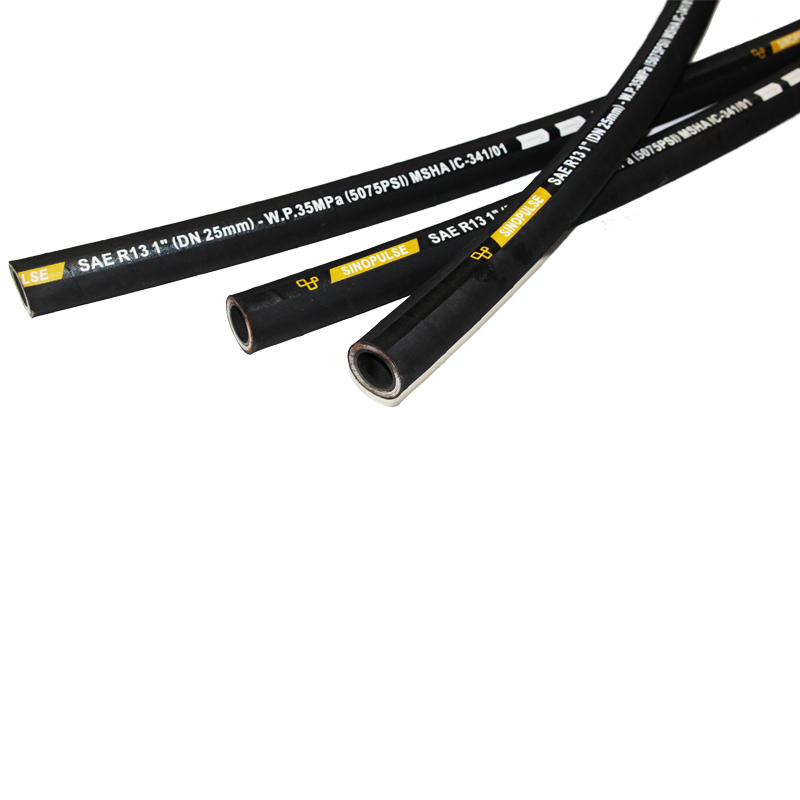
Strategic Application Scenarios & Technical Advantages
The robust design and superior performance characteristics of the SAE100 R13 Multiple Steel Wire Spiral Hydraulic Hose make it an indispensable component across a spectrum of heavy-duty industrial and mobile applications where high pressure, abrasion, and dynamic stresses are commonplace. In the construction sector, for instance, these hoses are vital for excavators, bulldozers, and cranes, transmitting hydraulic power to their formidable arms and lifting mechanisms. Their ability to withstand continuous impulse cycles and extreme working pressures ensures uninterrupted operation on demanding job sites, directly impacting project timelines and overall productivity. Similarly, within the mining industry, where machinery operates in highly abrasive and corrosive underground environments, the durable outer cover and high-pressure resilience of the r13 hose significantly extend the service life of equipment used for extraction, drilling, and material handling, minimizing costly downtime and enhancing worker safety. The petrochemical industry also relies heavily on the chemical resistance and high-temperature tolerance of these hoses for fluid conveyance in oil and gas extraction, refining, and transportation processes, where exposure to aggressive media and extreme temperatures is a constant challenge.
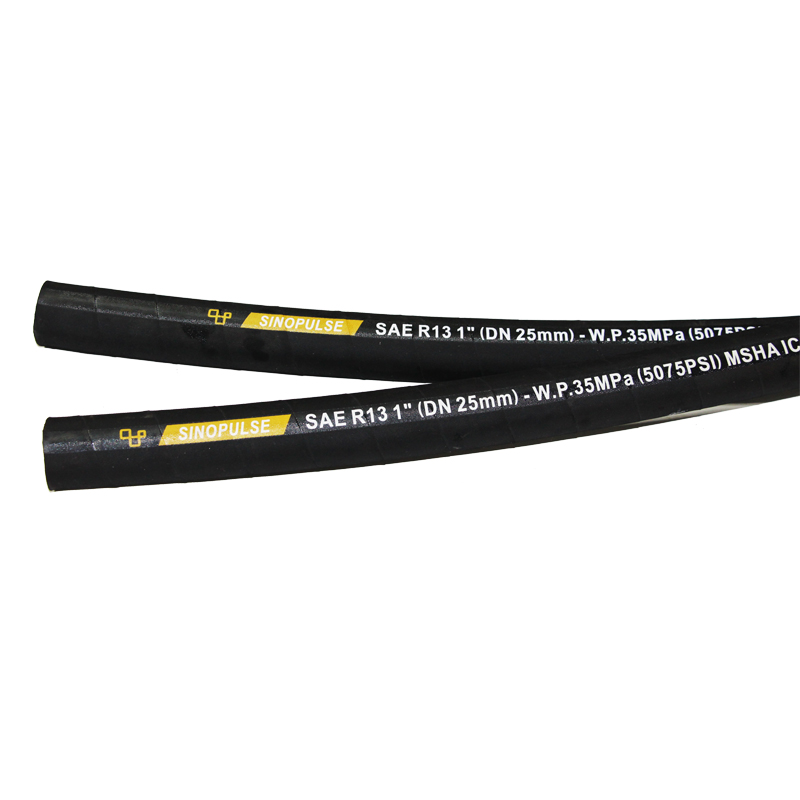
Beyond these critical sectors, the hydraulic hose r13 finds extensive use in metallurgy for forging and casting machinery, in shipbuilding for deck cranes and steering gear, and in large-scale agricultural machinery like combine harvesters and high-horsepower tractors. Its technical advantages translate into tangible operational benefits. Firstly, its exceptional pressure integrity significantly reduces the risk of blowouts and leaks, contributing to energy efficiency by preventing fluid loss and maintaining system pressure, thereby reducing pump workload and fuel consumption. Secondly, the advanced synthetic rubber compounds used for the outer cover provide superior anti-corrosion and abrasion resistance, protecting the internal steel wire reinforcement from harsh environmental elements and physical wear, which is especially beneficial in industries like water supply and drainage where hoses are exposed to varying pH levels and potential chemical interactions. This enhanced durability directly correlates to a longer service life, reducing the frequency of hose replacements and associated labor costs. The fatigue resistance derived from its multi-spiral construction further minimizes the likelihood of premature failure due to continuous bending and pressure cycling, offering unmatched reliability and a lower total cost of ownership compared to conventional hydraulic hoses.
Achieving Excellence: Manufacturer Selection and Custom Solutions
Selecting the right manufacturer for SAE100 R13 hydraulic hose is a critical decision that directly impacts the long-term performance and reliability of hydraulic systems. It extends beyond merely comparing price points and delves into evaluating a manufacturer's commitment to quality, adherence to international standards, technological capabilities, and responsive customer support. Reputable manufacturers distinguish themselves through rigorous quality control processes, often holding certifications such as ISO 9001 for quality management and ISO 14001 for environmental management, signifying a holistic approach to responsible and high-standard production. They invest in state-of-the-art testing equipment, performing impulse tests, burst tests, and material analysis to ensure every batch of r13 hose meets or exceeds SAE and ISO specifications. A key differentiator is often their expertise in material science, allowing them to formulate custom rubber compounds for enhanced resistance to specific chemicals, extreme temperatures, or unique environmental stressors, catering to highly specialized industrial requirements.
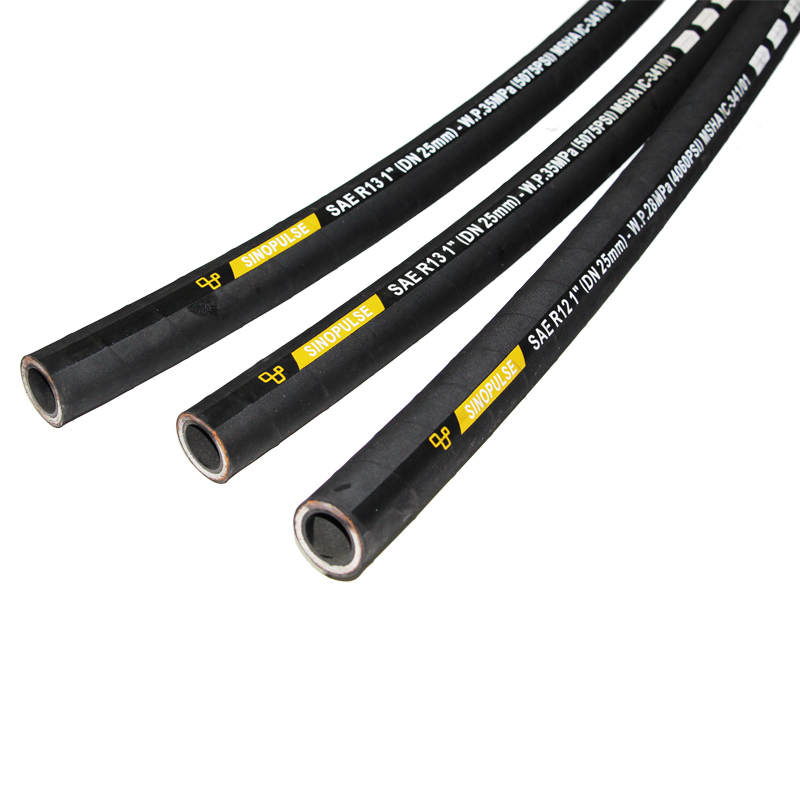
Furthermore, leading suppliers of hydraulic hose r13 offer comprehensive custom solutions. This is particularly valuable for original equipment manufacturers (OEMs) and large industrial operations that require hoses tailored to specific equipment designs or unique operating conditions. Customization can involve precise lengths, specific end fittings (crimps, flanges, quick couplings), specialized outer covers for enhanced flame retardancy or UV resistance, or even hybrid hose designs for multi-fluid applications. For instance, a mining client might require a hose with a highly abrasion-resistant cover and robust flame-retardant properties due to underground safety regulations, while a marine application might demand superior saltwater corrosion resistance and flexibility. Experienced manufacturers possess the engineering capability and flexibility to adapt their production lines to these bespoke requirements, providing value-added services that go beyond off-the-shelf products. Companies with a long service history and a portfolio of successful collaborations with major industry players often demonstrate a higher level of authority and trustworthiness, acting as reliable partners rather than mere suppliers in the complex ecosystem of fluid power solutions. Choosing a partner with proven experience and a dedicated technical support team ensures not only product quality but also long-term operational peace of mind.
Real-World Impact: Application Case Studies
The practical effectiveness of the SAE100 R13 Multiple Steel Wire Spiral Hydraulic Hose is best demonstrated through its successful deployment in challenging real-world scenarios. Consider a large-scale open-pit mining operation in Western Australia, where massive hydraulic shovels and haul trucks operate continuously under extreme dust, temperature fluctuations, and immense pressure. Prior to upgrading to r13 hose assemblies, the client experienced frequent hose failures—approximately every 3-4 months—due to constant pressure surges and external abrasion, leading to significant unscheduled downtime and fluid loss. After implementing R13 hoses from a reputable supplier, which included customized lengths and heavy-duty abrasion-resistant covers, the mean time between failures (MTBF) for these critical hydraulic lines extended to over 18 months, representing a fivefold increase in operational reliability. This improvement translated into an estimated annual savings of 1.2 million AUD in maintenance costs and a notable reduction in lost production time, underscoring the long-term economic benefits of investing in high-quality components.
Another compelling case study involves a major infrastructure project in Southeast Asia, focused on constructing high-rise buildings and bridges. The hydraulic systems of the piling rigs and concrete pumps faced constant challenges from high-frequency pressure impulses and the corrosive nature of the construction environment. Conventional hoses struggled to cope, necessitating frequent replacements and posing safety risks due to potential fluid leaks at high pressures. By transitioning to a specialized hydraulic hose r13 solution, engineered with enhanced flexibility for tight routing and superior resistance to concrete splatter, the project experienced a marked improvement in equipment uptime and safety compliance. The contractor reported a 40% reduction in hose-related breakdowns over a 12-month period, contributing to the project being completed ahead of schedule and within budget. These examples highlight not only the superior technical performance of the r13 hose in diverse applications but also its direct contribution to improved operational efficiency, reduced maintenance expenditures, and enhanced safety for personnel working in demanding industrial environments. Customer feedback consistently emphasizes the reliability and durability of these hoses as key factors in their decision-making process.
Ensuring Reliability: Quality Assurance and After-Sales Support
For B2B customers, the commitment to quality assurance and robust after-sales support is as crucial as the product's technical specifications. A leading manufacturer of SAE100 R13 Multiple Steel Wire Spiral Hydraulic Hose stands by its products through comprehensive quality control measures implemented at every stage of production, from raw material sourcing to final product inspection. Adherence to international standards such as ISO 9001 and strict internal protocols ensures consistency and reliability. Every batch of r13 hose undergoes rigorous testing, including hydrostatic proof tests, impulse fatigue tests, and burst pressure tests, often exceeding the requirements of SAE J517 and ISO 3862-1 to guarantee exceptional performance under extreme conditions. This commitment is often backed by a transparent quality assurance framework, providing customers with detailed product certifications and test reports upon request, building a foundation of trust and validating the product's superior engineering and manufacturing precision.
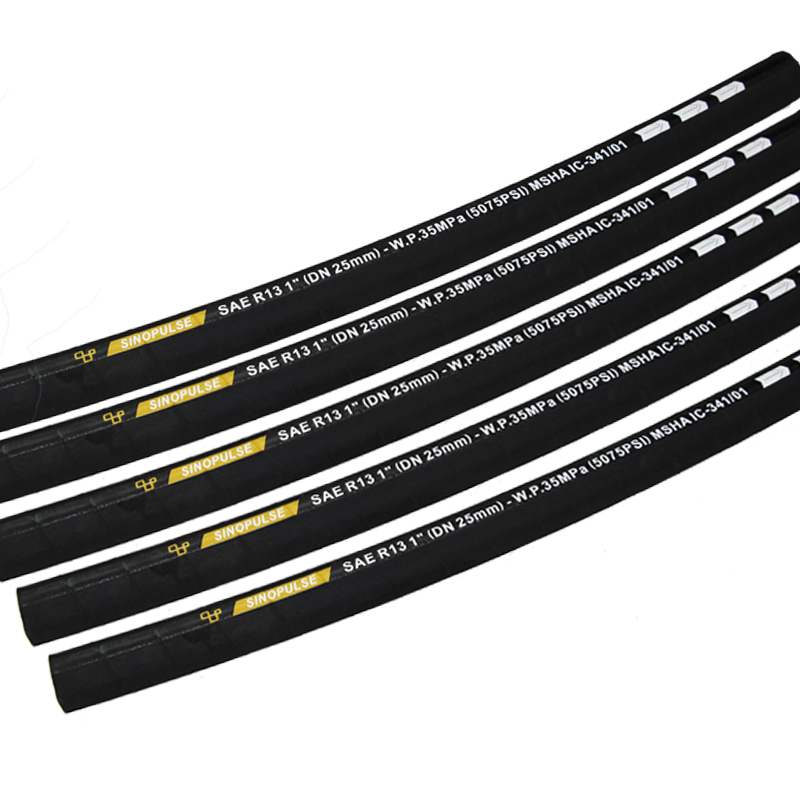
Beyond the manufacturing floor, the credibility of a supplier is significantly enhanced by their after-sales support and logistical capabilities. This includes clear communication regarding delivery cycles, which are often streamlined through optimized supply chain management and efficient production scheduling, ensuring that critical components like the hydraulic hose r13 reach customers promptly, minimizing potential project delays. Furthermore, a comprehensive warranty commitment is a testament to the manufacturer's confidence in their product's durability and performance. A typical warranty for a high-quality R13 hose might cover manufacturing defects for a period of 12 to 24 months, providing peace of mind for industrial users. Exceptional customer support, including technical assistance, troubleshooting guides, and immediate response to inquiries, further strengthens client relationships. Companies that prioritize long-term partnerships often provide dedicated account managers and offer on-site technical training or consultation, ensuring that clients can maximize the value and operational lifespan of their r13 hose investments and proactively address any potential issues.
Frequently Asked Questions (FAQ) about SAE100 R13 Hoses
-
What distinguishes an R13 hose from other SAE 100R series hydraulic hoses?
The primary distinction of an R13 hose lies in its reinforcement structure. While many SAE 100R series hoses utilize single or double wire braids, the R13 hose incorporates multiple layers (typically four or six) of high-tensile steel wire wound in opposing spiral directions. This multi-spiral construction provides superior resistance to extremely high pressures, significantly enhanced impulse fatigue life, and reduced volumetric expansion compared to braided hoses. It is specifically designed for very heavy-duty applications demanding sustained high-pressure operation and exceptional durability, where other hose types would prematurely fail.
-
What are the typical operating temperature limits for a hydraulic hose R13?
SAE100 R13 hoses are designed to operate across a broad temperature range, typically from -40°C to +121°C (-40°F to +250°F). This wide range ensures their suitability for diverse industrial environments, from extremely cold climates to operations involving hot hydraulic fluids. It is crucial to verify the specific manufacturer's specifications as some specialized variants may offer extended temperature capabilities for niche applications. Exceeding these limits can compromise the hose's material integrity and lead to premature failure, so proper system design and fluid selection are vital.
-
Can r13 hose be used with various hydraulic fluids?
Yes, the inner tube of a standard SAE100 R13 hose is typically made from synthetic rubber compounds, such as Nitrile (NBR), which are highly compatible with petroleum-based hydraulic fluids, water-glycol, water-oil emulsion, and air. However, for specific applications involving specialized synthetic fluids, bio-oils, or aggressive chemicals, it is essential to consult the manufacturer's fluid compatibility chart or request a custom hose with an inner tube material specifically formulated for that fluid. Ensuring correct fluid compatibility prevents inner tube degradation, which can lead to contamination of the hydraulic system and hose failure.
-
What is the typical service life of an r13 hose, and how can it be maximized?
The service life of an r13 hose varies greatly depending on the application's severity, operating conditions, proper installation, and maintenance practices. Under optimal conditions and within specified parameters, these hoses can last several years in heavy-duty industrial settings. To maximize service life, it is crucial to adhere to the specified minimum bend radius, avoid twisting the hose during installation, protect it from external abrasion or kinking, ensure proper selection of end fittings, and conduct regular inspections for signs of wear, leaks, or damage. Using the correct fluid and operating within recommended pressure and temperature limits are also key factors in extending the hose's lifespan.
References
- Society of Automotive Engineers (SAE) International. SAE J517: Hydraulic Hose. Warrendale, PA.
- International Organization for Standardization (ISO). ISO 3862-1: Rubber hoses and hose assemblies — Wire-braid-reinforced and wire-spiral-reinforced hydraulic types — Specification for dimensions and requirements. Geneva, Switzerland.
- Hydraulics & Pneumatics Magazine. Technical articles on hydraulic hose selection and maintenance.
- Fluid Power Journal. Industry insights and research on high-pressure hydraulic systems.
- National Fluid Power Association (NFPA). Standards and best practices for fluid power systems.
Product Application









